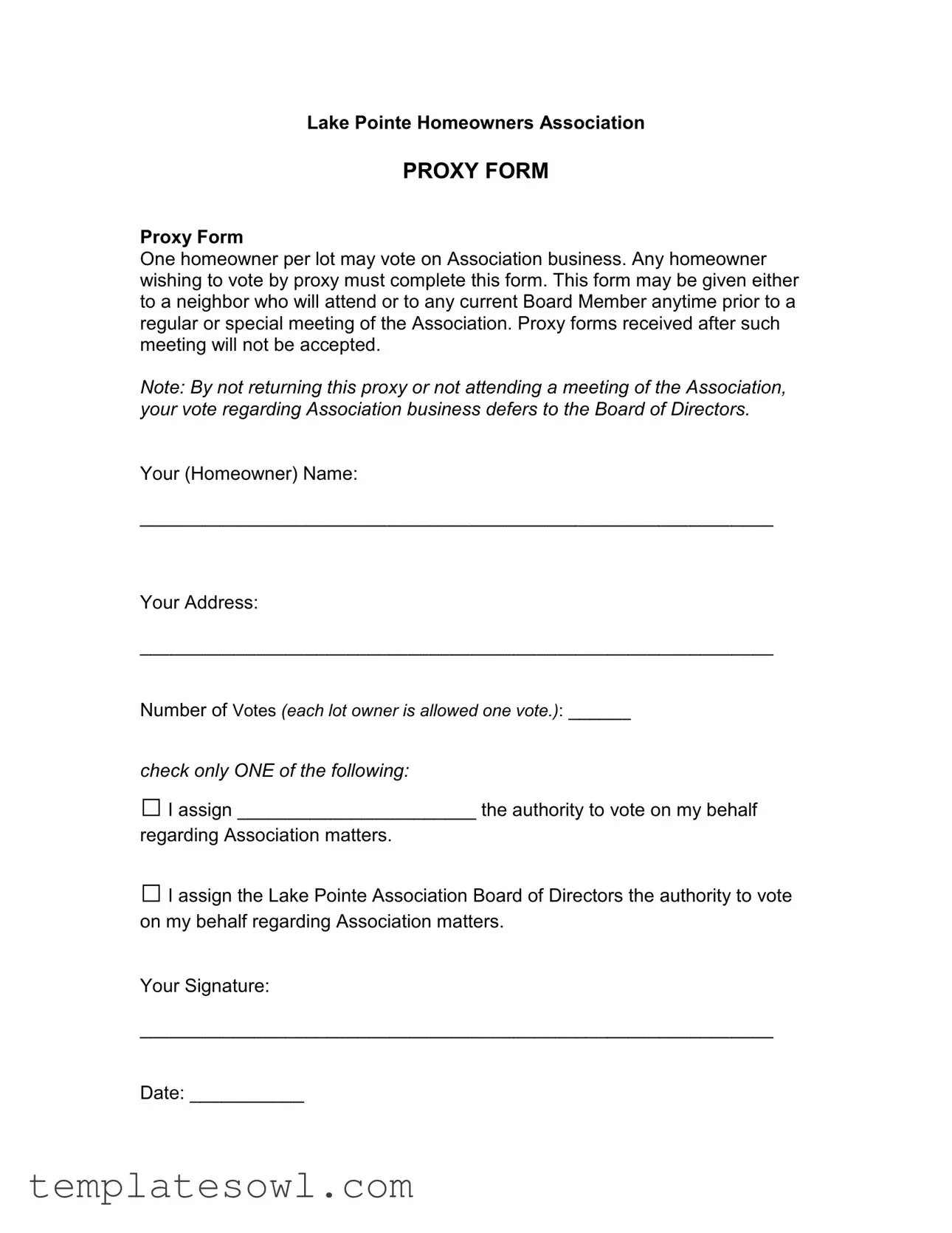What is a Homeowners Association Proxy Form?
The Homeowners Association Proxy Form allows homeowners to assign someone else to vote on their behalf during Association meetings. This ensures that your voice can still be heard even if you cannot attend in person.
Who is eligible to vote by proxy?
Each homeowner is entitled to one vote per lot. If a homeowner is unable to attend a meeting, they may complete a proxy form to allow another individual to cast their vote on their behalf.
How do I properly complete the Proxy Form?
To complete the Proxy Form, fill in your name and address, indicate the number of votes you have, and designate either a specific neighbor or the Board of Directors to vote for you. Then, sign and date the form to validate it.
Can I give the Proxy Form to anyone?
You may assign the proxy to a neighbor who will attend the meeting or to any current member of the Board of Directors. Ensure your chosen representative is informed and able to fulfill this role.
When should I submit my Proxy Form?
The Proxy Form must be submitted before the start of a regular or special meeting of the Association. Forms received after the meeting has begun will not be accepted, so it's wise to submit it well in advance.
What happens if I do not submit a Proxy Form?
If you do not submit a Proxy Form and cannot attend the meeting, you will forfeit your right to vote on Association matters during that session. This may limit your influence on important decisions.
Is the Proxy Form valid if it is not signed?
No, the Proxy Form must be signed and dated by you, the homeowner, for it to be deemed valid. Unsigned forms will not be accepted.
Can I revoke my Proxy once it is assigned?
You can revoke your Proxy at any time before the associated meeting. To do so, simply inform the individual holding your Proxy or notify the Board of Directors and submit a new Proxy Form if necessary.
What if I have multiple properties? Can I vote on each one?
Yes, you can vote on behalf of each property you own. However, you must complete a separate Proxy Form for each property to ensure your voting rights are properly allocated.
Where can I obtain a Proxy Form?
Proxy Forms can typically be obtained from your Homeowners Association's website or by contacting a Board Member directly. It is important to use the most recent version of the form to ensure compliance.
